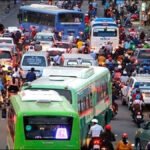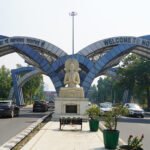“Sustainable traffic — the way to promote quality of life in the city”
According to the report Israel’s Transportation Ministry has prepared an ambitious plan in recent months to promote targets of more widespread use of sustainable transport (walking, cycling and scooters, and public transport) in the country’s cities. The plan seeks to persuade Israelis to do much more walking, bicycle riding and using buses and trains when traveling, instead of driving their cars and jamming up the roads. This is one of the key issues promoted by the EU and the plan is similar to those in many cities in developed countries aimed at curbing the use of cars.
“Sustainable traffic — the way to promote quality of life in the city”
In contrast, in Israel, a much more modest bus travel target was set in 2012 — 40% of motorized travel in metropolitan areas. In 2019, a target of 10% of all traffic in cities on bicycles was set. At the same time, transport infrastructure development in Israel in recent decades has been biased in favor of car use, while the development of public transport initiatives and bicycle paths has been treading water.
On this researchers Dr. Nir Sharav, Markus Sainok, Yuval Shaftan and Gali Freund wrote, “The development of land use in the country has expanded the suburbs in a way that has further increased dependence on the private car, thus deepening the problems of transport accessibility. In a country like Israel where 91% of the population lives in urban localities, sustainable traffic is the best and fastest way to promote the quality of life in the city.”

In a country like Israel where 91% of the population lives in urban localities, sustainable traffic is the best and fastest way to promote the quality of life in the city.”
The researchers mapped 136 localities in Israel with 10,000 residents and more and added in the model that made up the Central Bureau of Statistics travel survey from 2017 (the latest survey published on the subject) with various characteristics such as population size, metropolitan location, sector, density, socioeconomic index and peripheral geographical index. The share for sustainable traffic under the model would be 55% -75%, with cycling being influenced by the urban topography and the availability of cycling infrastructure.
For 19 localities a target of 75% was set, for 41 localities a target of 70%, for 36 localities a target of 65%, for 37 localities a target of 60%, and for only three localities a relatively low target of 55%. The targets have been set for 2040 in accordance with the plan’s strategy, but the authors admit that the target is for the coming decades and will certainly not be achieved within 20 years from today.
In Tel Aviv,Israel more than half of the trips in the city are made by car — and the goals of the program reduce this rate to a quarter. The plan in Jerusalem sets a similar goal, and its

In Tel Aviv,Israel more than half of the trips in the city are made by car — and the goals of the program reduce this rate to a quarter.



















